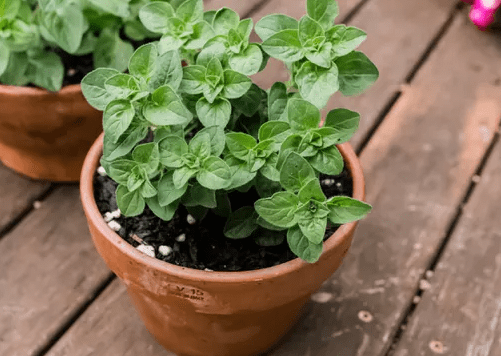
Description
Herbs like oregano (Origanum vulgare) are used to season cuisine. There is little proof that it provides any health benefits, but at ordinary meal amounts, it is considered harmless. Olive-green foliage and purple blooms are features of oregano. It shares close kinship with marjoram, basil, thyme, and mint among other herbs. Though there is a broad range of colors across various varieties, from yellow to dark green, fresh oregano is typically brilliant green in color. Dried oregano varies in hue from a pale brownish green to a deeper shade of green.
Habitat
Although it is native to the Mediterranean region, oregano is grown in Greece, the Dominican Republic, Mexico, Italy, and Turkey. It is found in the temperate Himalayas of India, ranging from Sikkim to Kashmir. It can be planted in any warm garden soil because it is a hardy plant.
Uses
Certain compounds in oregano may aid lessen coughing. Additionally, oregano may aid in digestion and aid in the defense against some bacteria and viruses. Oregano is used to treat wounds, parasitic infections, and a host of other ailments, however these claims are not well supported by scientific research.

Varieties
Consider the following popular oregano varieties:
Common oregano, or Origanum vulgare, is the species that is most frequently used in cooking.
Golden oregano, or Origanum vulgare ‘Aureum’, is: Compared to the original species plant, this cultivar has softer leaves and a softer flavor. As an ornamental plant rather than a kitchen herb, it is more often used.
Greek oregano, Origanum heracleoticum, is also frequently used in cooking and has a somewhat powerful flavor.
Plant Care
- Light
The majority of oregano cultivars require full sun, which is six hours or more of direct sunlight each day on most days. To avoid scorching their leaves, certain types, like golden oregano, demand a little shelter from direct sunlight.
- Soil
The best soil for growing oregano is a sandy loam. Oregano does not grow as well in moist, high-organic matter soil as it does in well-drained, light, and dry soil. The ideal pH range for soil is also slightly acidic to neutral.
- Water
Oregano can withstand mild drought conditions and requires just one inch of water each week. Let the soil dry completely in between applications of water. Root rot and other issues can arise from excessive irrigation.
- Temperature and Humidity
Depending on the variety, oregano may withstand both moderately cold and high temperatures. It grows best in temperatures between sixty and eighty degrees Fahrenheit. In humid climates, it requires acute soil drainage and adequate air circulation because it generally resists high humidity.
- Fertilizer
Fertilization is usually unnecessary for oregano because it can tolerate poor soil conditions. Large doses of nutrients, such nitrogen, can actually alter the herb’s flavor.
Table





